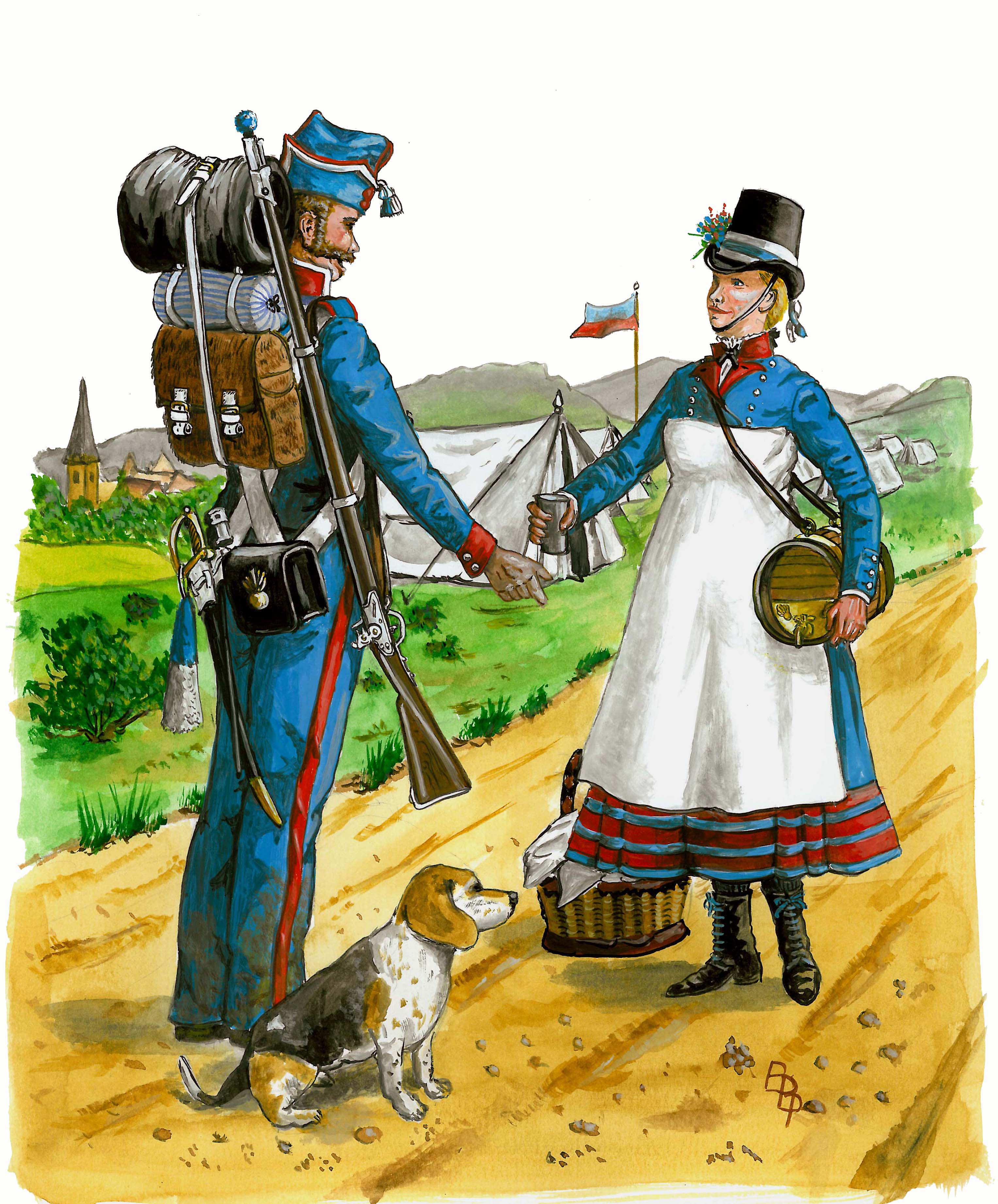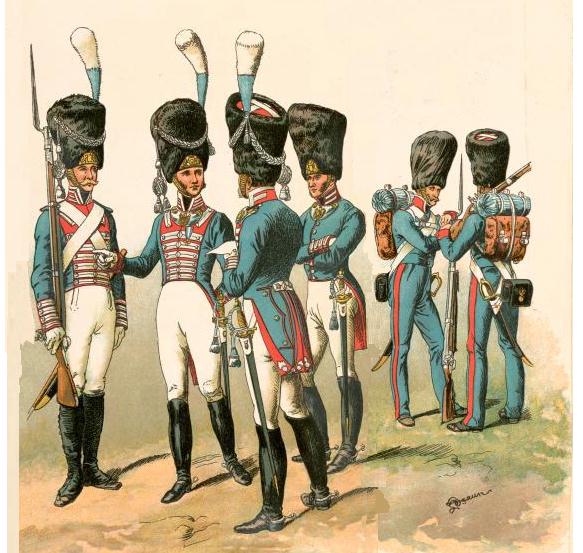Bavaria
Grenadier Garde Regiment
Grenadier and Sutleress
1815
The King of Bavaria ordered that a Royal Guard Corps be raised on July 16th 1814. It was to consist of a Grenadier-Garde Regiment of three battalions and a mounted Garde-du-Corps of two squadrons. The personnel for these units were to be drawn from the best soldiers in the army and would act as a personal bodyguard for the King. As the Napoleonic Wars were ending, the Guard saw no action. It would only be in existence for another fifteen years or so as it was disbanded in 1832. The regiment became the 1st Leib (Life) Regiment which was to remain in being until 1918.
UNIFORM
The full dress or gala uniform was similar to the rest of the army except for the headdress which was a bearskin cap with a brass front plate bearing the Bavarian Royal Arms. It had a round patch at the rear on top which was red with a white cross. White cords and flounders were also worn. The coatee was cornflower blue with red collar, lapels and round cuffs. There were white lace loops and buttons on the lapels and cuffs. The buttons were white metal and officers lace was silver. White breeches and black knee high gaiters completed the uniform.
For undress and field wear the bearskin cap was replaced by the raupenhelm, the crested helmet worn by the rest of the army. The coatee was replaced by a short single breasted jacket with red collar and round cuffs. The collar was edged in white. As was the fashion, most troops wore long cornflower blue trousers over short gaiters. The trousers had a broad red stripe down the side.
Our illustration shows a grenadier in field dress. He is wearing the short jacket and red striped trousers. On his head is the fatigue cap or bonnet de police. His greatcoat is carried rolled up in a ticken bag atop his valise which is made of cowhide. Above it all is his bearskin cap wrapped in an oilskin cover. It had a wicker frame inside to keep it from flopping about.
The sutleress was a feature of all armies in these times. She was often the wife of a soldier in the regiment who could supplement her husband's meagre pay by supplying drinks and snacks to hungry troops. Her uniform was not official issue but often made by herself from discarded regimental uniforms. She would make it appear instantly recognizable to the soldiers in her regiment. Items such as her wooden canteen barrel were often purchased for her by the officers and men.
The Grenadier-Garde Regiment 1815
by Anton Hoffman







